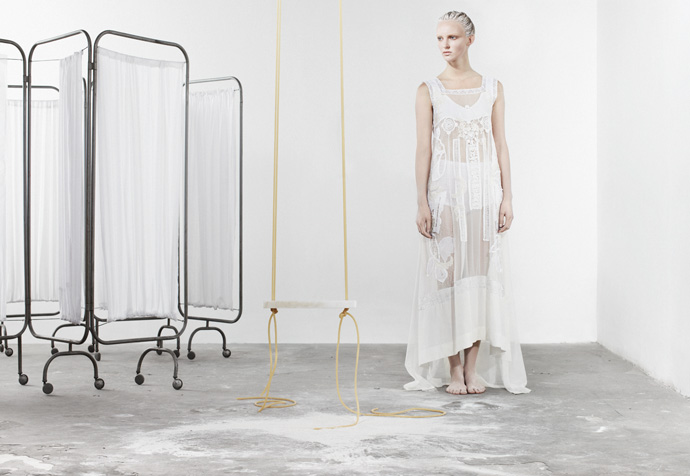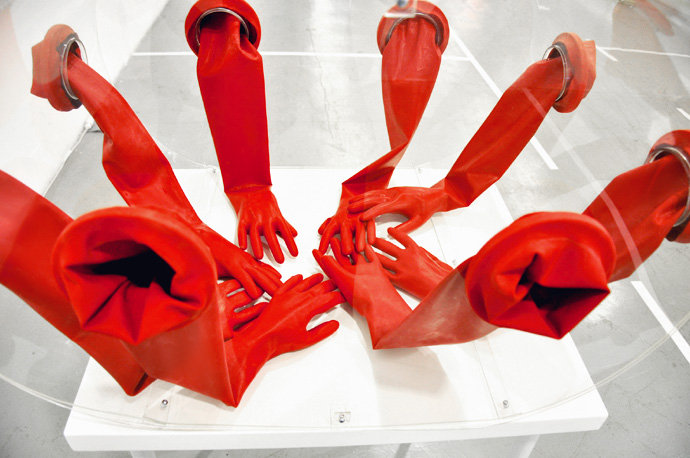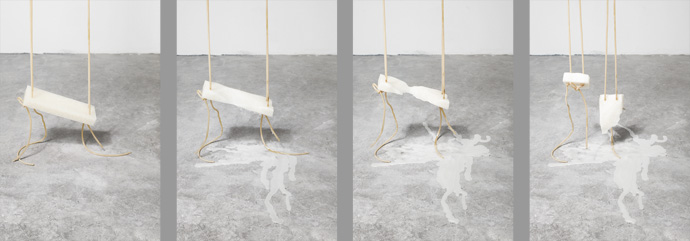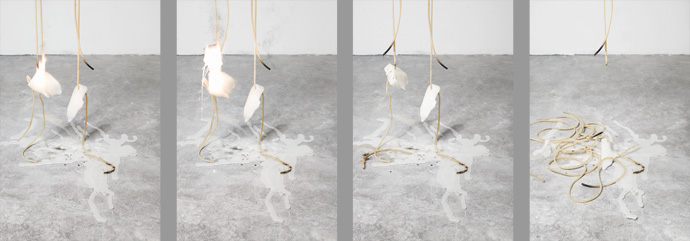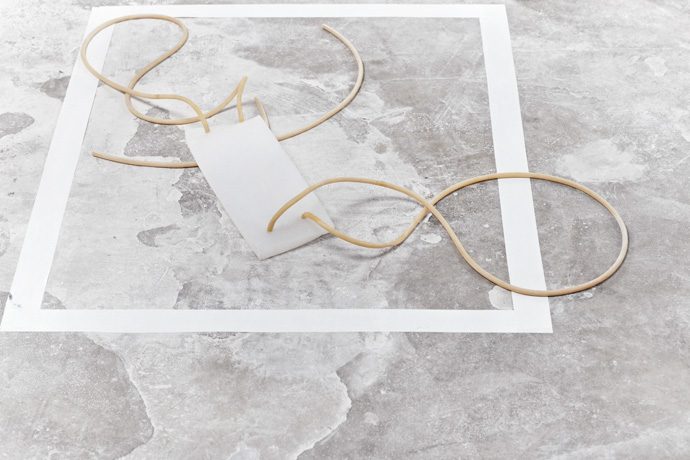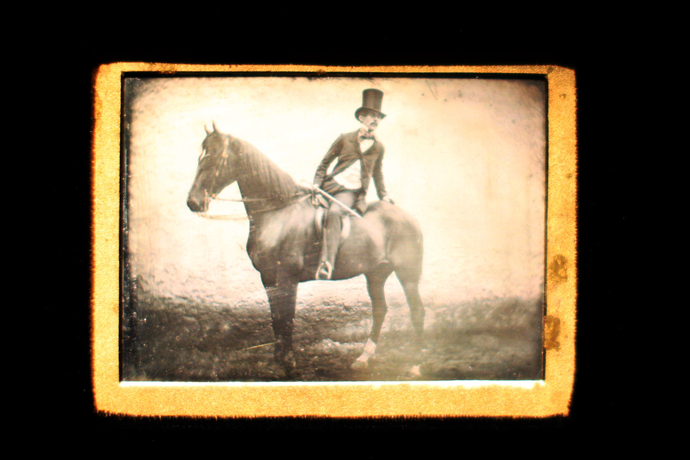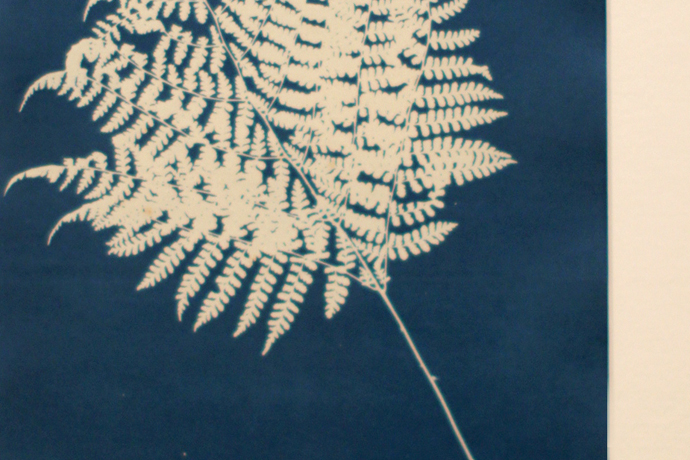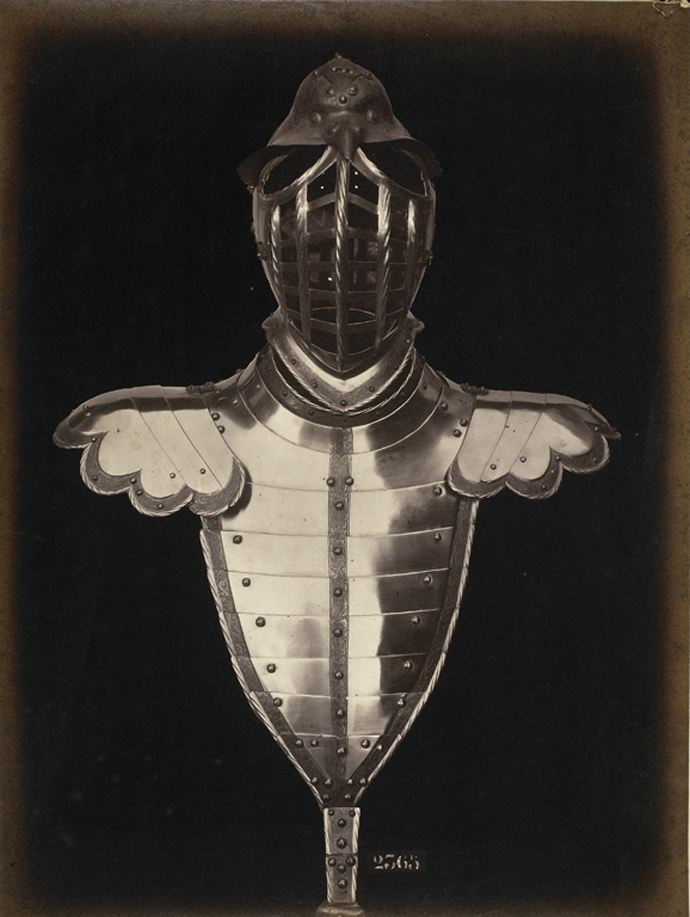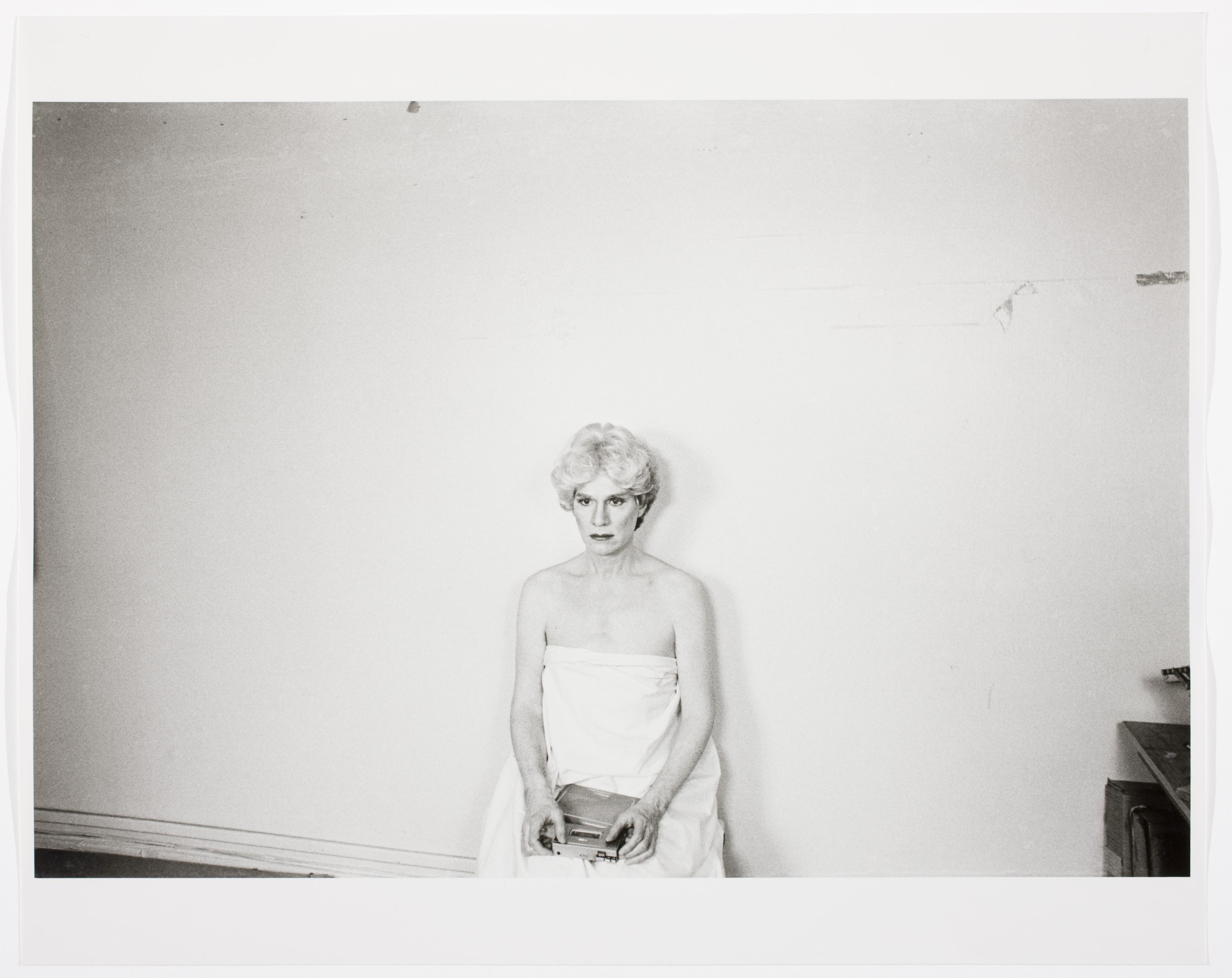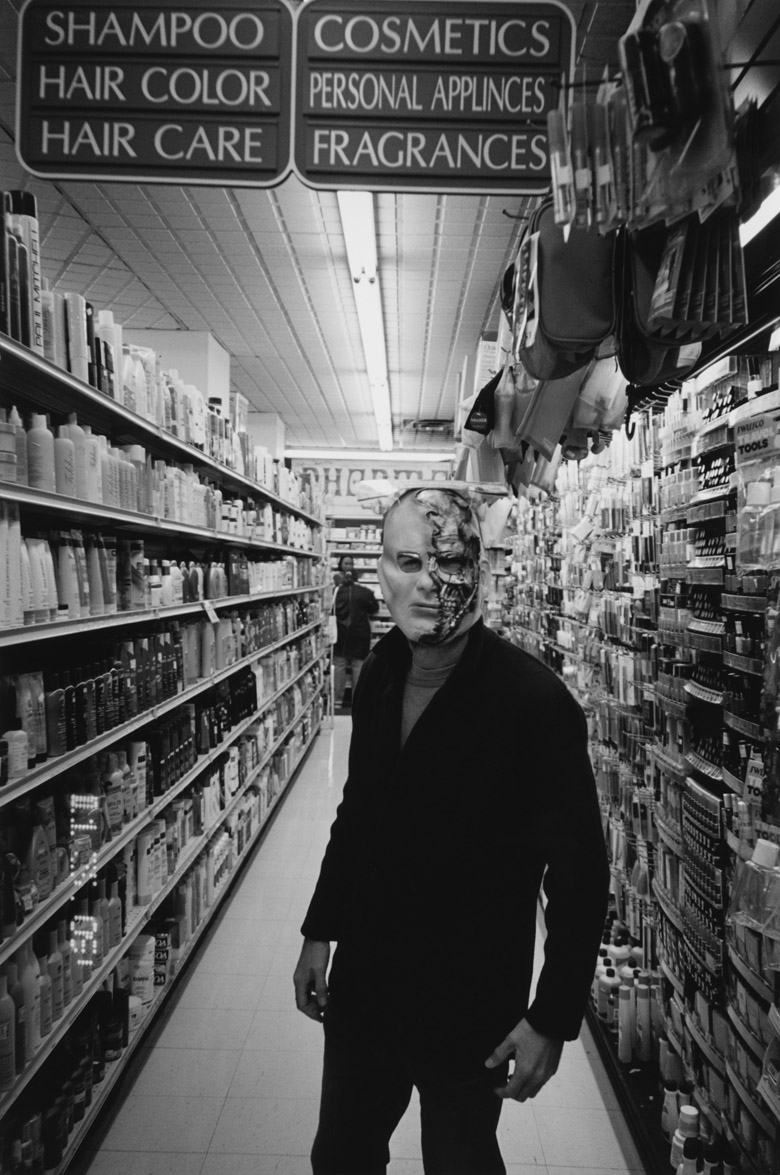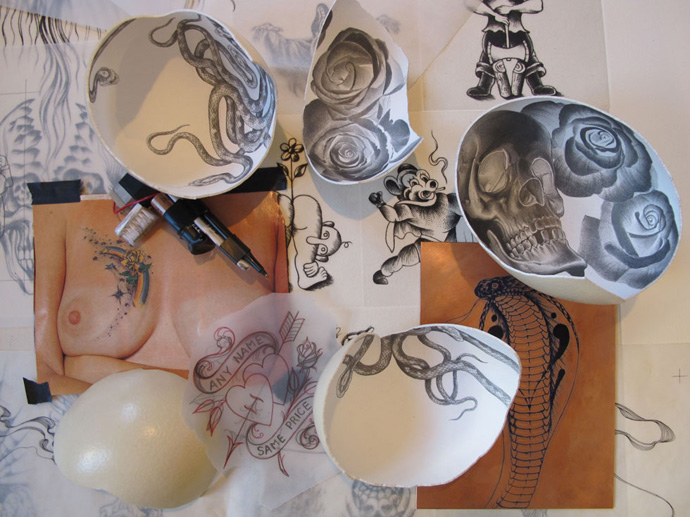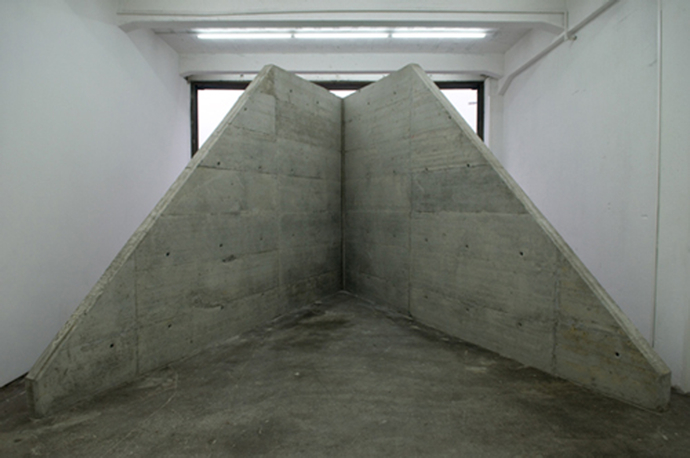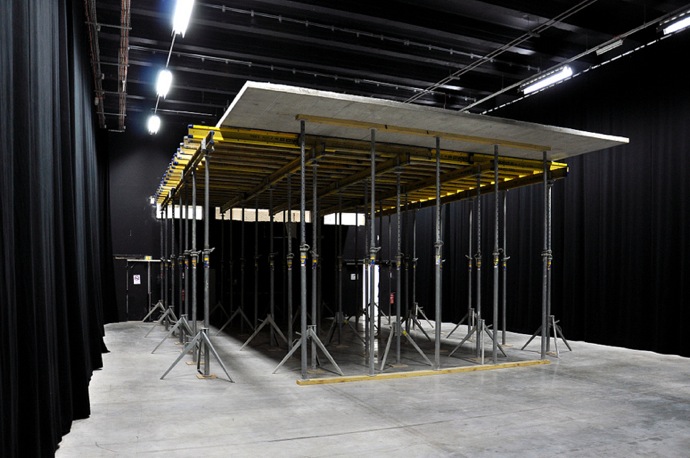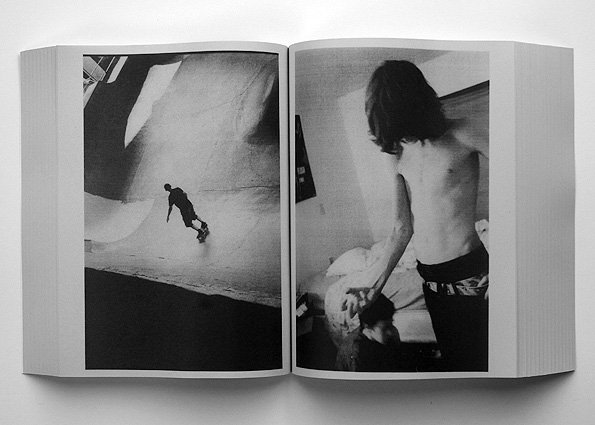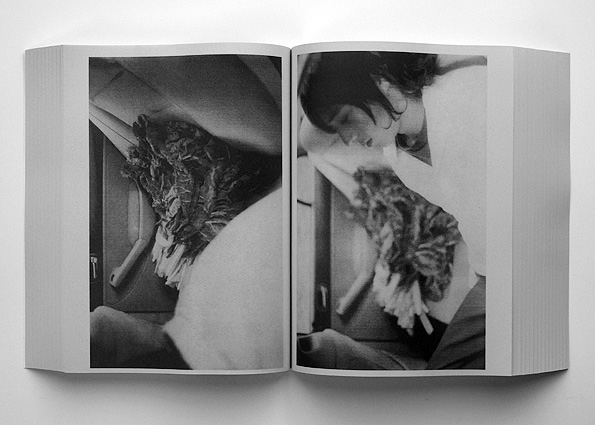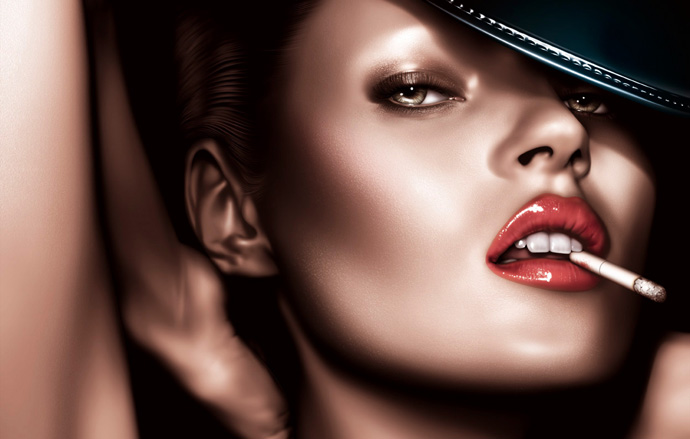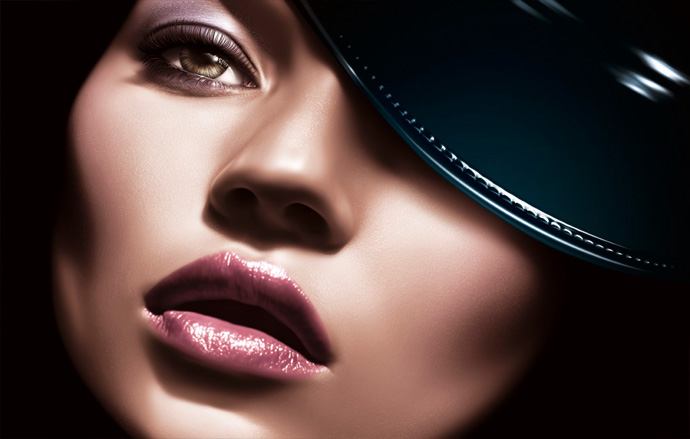-

Efi Spyrou “swings”
-Cypriot Artist Efi Spyrou “swings” to our attention with the latest issue of Pop magazine SS 2011.
Efi Spyrou’s artistic reflection is interdisciplinary, her art on the conjunction of corporality and art theory. Often her approach, as manifested through her pieces and installations, seems cold and industrial. Yet it is charged with personal memories associating emotional moments. Remarkably enough, Efi operates with inhibiting elements of isolation, institutionalisation and discipline to achieve her purpose: ignite an emotional spark.
Efi Spyrou: Swing (1), 2010 marble, latex; 285 x 30 x 15cm. Photo by René Habermacher for PoP magazine SS 2011. Model: Ymre Stimkema.
This Issue of Pop magazine features a group of 5 contemporary artists: Gillian Wearing, Meredith Sparks, Linda Sterling, Clunie Reid and Efi Spyrou, Juxtaposing pieces of her SWING series with fashion by Antonio Marras, her work for this collaboration oscillates around the idea of “lost innocence”.
At this Chapter of her Life, Efi Spyrou contemplates inwards, both on personal and collective memory – after being in the spotlight as a fashion model, presenter and public figure that stood for the right cause:
She was involved in Campaigns of public interest as against eating disorders, “Fashion Targets Breast Cancer” and the UNHCR-the UN refugee Agencies ‘Against Women Trafficking’ and was subsequently awarded with the Cyprus “Leader of the Year in Advertisement”.
THE STIMULEYE finds Efi Spyrou in Athens, her hometown of choice for a conversation on her most recent projects,
including her first solo exhibition at Six D.O.G.S in Athens. The exhibition will run from May 6 2011.Efi Spyrou: Untitled, 2010, latex, iron, plexiglas, wood; 85 x 65 x 120
EFI SPYROU: Hi Rene! Here I am!
RENE HABERMACHER: hey hey- just saw you! welcome!!!!!
I think now it’s a good time for our conversation! Shall we?
In your work we find often references to childhood, as in your most recent SWING series, but as well for example in “Untitled” 2010 (incubator). What is the relation to yourself?
Each detail, each piece reflected on my work is connected to my memories, my experiences especially in my early ages. Sometimes I feel I was literally thrown from childhood to adulthood in an instant moment… There is an inner need to go back again and start from scratch, with a different pace.
How did you grow up?
In a very disciplined way…
I grew up in a very small, conservative, strict, disciplined community where freedom of speech was not something really known… After my 18th birthday, when I decided to leave my homeland Cyprus, I was catapulted into the wild world of which I knew nothing about! And first of all, I knew nothing about rapacity…I was 18 years but I had the feeling to be in fact much, much younger and very scared.
Following your journey had taken you quite somewhere else- in terms of location and orientation. You returned only much later to your point of departure, with your art and the themes your current work embraces.
After 17 years I am in the position to say that this journey was difficult but full of colours, aromas and sounds, the voices of different cultures, people, moments. You see, I have entered the fashion world as a model and subsequently public figure, which gave me the chance to travel a lot all over the world. Although I had great moments, and I do feel lucky about it – I had to test my limits, my values and myself in many ways: In this race the cost was not insignificant. That is why there was a turning point, of explosion, – I had to slow down – and turn the time back, back to my roots and see which were the remains! This is where art gave me the tools to deal with all this material I had in my hands…
Efi Spyrou: Swing (2), 2010, silicone, latex; 75 x 30 x 15cm. Photo by René Habermacher for PoP magazine SS 2011. Model: Ymre Stimkema.
When we met last time in London to do our project for POP, we were focusing on your most recent work, the SWING. In fact it was a juxtaposition of your art with the fashion by Antonio Marras, under the helm of Isabelle Kountoure. It seemed like another circle had closed: with this new pieces that reflect on lost innocence and the interweaving with fashion that had marked another phase of your life.
This was a liberating experience for me. Every time I find the medium to make a conclusion of my contradicting “memory voices”… is an exciting moment. With the series of my works SWING, I had the chance to cooperate with a great team, working on the upside of fashion. And in parallel I had the chance to give light to a darker “space” as you say, “our lost innocence”. This is the only way for me to survive- to accept my bipolarity…
You started with the first piece of your “swing”series in marble. For this project you took cooperations with other people in account – thus creating more facets around the actual object…
The first piece was more an inner conversation. The development of the piece[s] through this cooperation was a conversation with others! This is really important for me, because I do believe that our personal “spaces” from a different perspective are collective “spaces”. The former is the reflection of the latter and vice versa!
In art, the material plays a significant role in the interpretation of the piece.
During our collaborative working process i’ve developed other variants of the original swing: wax, silicone, plaster and mirror. Doing so, I leave an open interpretation of my recent Swings”. What matters to me, is not to give a solution to a problem, but to actually “spark off” something…Swing (3), 2010 by Efi Spyrou: paraffin wax, latex; 335 x 30 x 15cm. Photo by René Habermacher for PoP magazine SS 2011.
As you operate not only plenty with personal memories, but integrate the collective as well – in this context, how important is Athens, or Greece as a background for your work?
For my own work I incorporate a universal, collective memory in my pieces – at least this is what I am trying to do. Sometimes it could be characterised more “western”… but not surely Greek or Cypriot. I can assure you though that my life in Athens and especially the “new” way I look at the city and its everyday life here, gives birth to a lot of new ideas + questions + art pieces!
Spring, especially these days, is so refreshing! I cannot think of economic crisis – I keep my worries silent for the moment.
As far as concerning the emerging art scene over here: I think there is a lot to be done, in order to consider Athens as part of the greater art map. But I see a young art generation which is very promising…What are you working on right now and next?
I am preparing a solo exhibition in May. The show will be running from May 6th at the Six D.O.G.S exhibition space in Athens. Included on display are among new works some ready pieces that are already known.
For the moment I am studying the relationship of memory with the game of lights and shades in space. I am working on sketches right now, may be for an installation, we will see…
I would love to have the chance for more collective dialogues in the future.Efi Spyrou: Swing (2), 2010, silicone, latex; 75 x 30 x 15cm. Photo by René Habermacher for PoP magazine SS 2011.
Thank you so much for this insightful talk!
Shall I say sweet dreams?
Efi Spirou’s solo exhibition at Six D.O.G.S, 6-8 Avramiotou Street, 10551, Athens, Greece
The exhibition will run from May 6 2011.a collaboration EFI SPYROU | ANTONIO MARRAS pop Magazine SS 2011
Hair Panos Papandrianos at CLM using Bumble and bumble
Make-up Yannis Siskos at Effex using Giorgio Armani Cosmetics
Model Ymre Stiekema at Viva London
Casting Angus Munro at AM Casting, Streeters NY
Set Design Emily Pugh
Photography Assistance & Digital Technician Laurent Dubin
Fashion Assistance Tui Lin
Hair Assistance Angel Sayers
Digital Remastering Dimitri Rigas at Dimitri.jp
Shot at The Russian Club Studios00 -

Next: EFI SPYROU
-“The tales interwoven with the remains of memories, carved by lights and shades into a living space that no longer exists.”
-

Istanbul, as the reactors fume.
-FRAGMENTS FROM ISTANBUL is a series by Stephane Ackermann and Brad Fox. Their collaborative poetics explores the recesses of contemporary Istanbul and its secret histories, as developed in the felicitous relationship between image and text.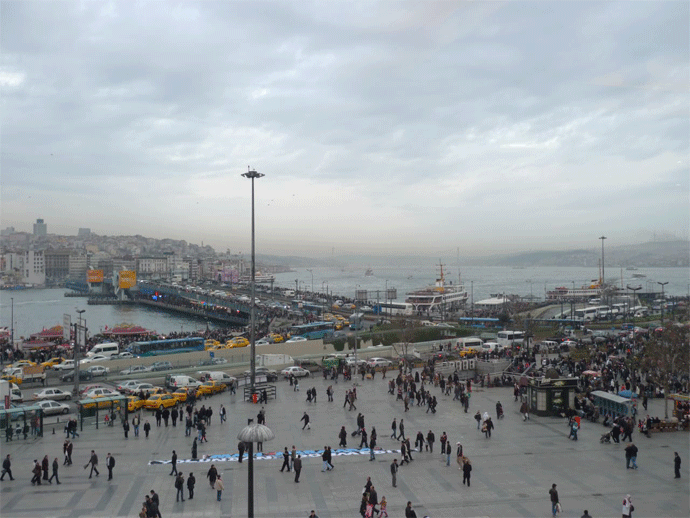
I came to the top of the entrance to the passageway under the waterfront highway. A stream of humanity emerging. Two covered women carrying a baby stroller, ballooned in their robes. A man selling flashlight cigarette lighters and plastic skeletons. An electric toy for children—an endless stream of tiny penguins climbed up a ladder and slid down a convoluted chute only to start again. Among the crowd of olive and pink faces was a single African. Streams of migrations, transforming faces, all the nations selling plastic toys, knock-off shoes, Chinese T-shirts, used cell phones, coming and going from work, school, mosque, church, home, shop, market, public office, train station, factory, cafe, restaurant, and we all fused, living within sight of peak humanity, peak oil, the trams rattling overhead, buses and cars, machines traveling underground, expansion, development. The bombs that had gone off weeks before, the uprisings, the fire and water spreading, the wicked meanderings of the stock market, the winds heading across the ocean—all of it was an expression of what we wanted. We could all trade faces and see each other everywhere. We here were among plastic rifles and teddy bears hung by their throats in the underpass—the covered women, the pink tourists, the invisible Alawi and their secret rites, the African who’d seen his village burned, his family scattered, who’d crossed continents at great risk only to find himself selling watches near water infested with jellyfish, where men from the east struggled to while away the hours and perhaps feed their families pulling tainted fish out of the exhaust of the ferries.
The last Greeks still heading to church after centuries of conquest, persecution, war, pogroms, the dervishes still laying hands on each other chanting the name of the divine in Pentecostal ecstasy, the transgendered women, heads held high, heading out for another night of rough trade. We were all magnetized by a common point. We were all there together surrounded by pregnant streetcats and the debris of the crowd. Because it drew us, somehow: our petty struggles were diluted and finally united into a growl from our collective throat—the time we were living through. And with that we all made our way to wherever we were going, me up the hill to my house, my arms loaded with cups and bottles and bags and coffee grounds, until I could finally drop it all on the formica counter and sit still watching an enormous hull heading north through the straits. -

Lori Pauli | Behind the 19th-Century British Photographs.
-Lori Pauli is the Associate Curator of Photographs at the National Gallery of Canada, home to more than 25,000 photographs in a collection that started in 1967.
She has recently put together the exhibition 19th-Century British Photographs; the third in a series of five exhibitions of selected masterpieces of the collection of the National Gallery. This exhibition traces the development of photography in Britain over the course of the Victorian era; from early, salted paper prints, to daguerreotypes, to magnificent turn-of-the-century platinum prints.
I met Lori at a guided tour of the exhibition. Ann Thomas, also a curator at the National Gallery, whom I had met in one of the events I organized introduced me to her and we briefly talked about meeting up to chat about Mexican artists included in the collection amongst other things.
Not too long after we met and talked about astrophotography, the Moderna Museet in Stockholm, Ron Mueck, her twin sister and some of the cultural differences I have noticed while in Canada.
For my first contribution to The Stimuleye, I will be sharing some of the questions I had for her on the exhibition.
Miguel Batel: How did the idea for this exhibition came together?
Lori Pauli: Basically, with our drawings collection we started a series of exhibitions based on our holdings, so we decided for photographs we would do the same thing. The first one was modern photographs from the collection, then we did 19th-Century French, and after this it will be American Photography from 1900 to 1950.
The fifth probably will be either American 1950 to the present, or possibly our holdings of Canadian photography.
Will this exhibition be travelling?
It will, I’m not sure exactly where it’s travelling, we have had interest from across the country, and we are just deciding where its going to end up.
How many photographs did you have to go through, and how many are currently exhibited?
There are about 112 photographs in the show, and I think I went through 2,000 in terms of 19th-Century photographs from the collection, so there was quite a bit to choose from, which was great.
The exhibition features some of the earliest photographic techniques. Which are some of the photographs you would consider to be the most important?
Well, of course some of the earliest would be the daguerreotypes, and we have a really great daguerreotype, that is quite large format; I don’t know if you remember it, but its of a man called John Berret Nelson and its around 8” by 10”, its fairly large compared to what normal daguerreotype sizes are. It’s called a mammoth plate, its beautifully created – masterfully crafted- and it comes with its original frame as well, so that is a real gem in the collection.
In terms of British we have a lot of salted paper prints by William Henry Fox Talbot, so those are other also really important pieces, because that’s the inventor of paper photography, it’s really great to have those.
Are there any borrowed items?
No, it is all from the collection.
You acquired some photographs for this exhibition, any specially difficult one to get?
One of them was the piece of armour, we think its by a woman called Jane Clifford. She was married to Charles Clifford, who was the most important photographer working in Spain. He made a lot of use of Queen Isabelle II construction projects and he did use of her armoury and her treasures. We recently acquired that.
-

ARI MARCOPOULOS talks to FILEP MOTWARY
-Ari Marcopoulos does lie, or does he really? His photographs carry a signature that one may call honest and this what intrigues the most.
Andy Warhol by Ari Marcopoulos©
Through the years of his career, as a serpent does, Ari changed his skin several times, revealing a new and shinier one. What he creates is not about glitter but on the other hand, it may be. Keeping in mind the collaborations his shared and the encounters he found along the way, including Andy Warhol, Basquiat… indeed there are several shiny stones marking his footsteps. Since the early 80’s, Marcopoulos has been photographing the reality of the American culture and all its siblings. Mainstream or not, his pictures and films are out there marking the period we are in. And although his work has often been a subject of surveys by several universities around the world, Ari doesn’t feel a nomad.
This is what he told me while preparing his three new major projects: the camera bag he designed for INCASE along with a limited edition book of unpublished photograph (Now is Forever), a show at the Confort Moderne and finally a movie featuring the Y.S.L collection for SS 2011….
Ari Marcopoulos selfportrait © for DAPPER DAN ISSUE O2
FilepMotwary : Ari, where does this interview find you, work wise and personally? What are you up to?
Physically it finds me with a very bad cold in my bed at home in California. Work wise is always varied, I am in-between assignments. But I am working on new books and sorting out an installation at the Kunsthalle in Vienna. Preparing for exhibitions in early 2011 in Paris and San Francisco. Personally is a hard thing to talk about. Life seems to constantly provide challenges
-

SCOTT CAMPBELL
-Opening reception for Noblesse Oblige in Los Angeles
New York based artist Scott Campbell celebrates his West Coast debut with the exhibition Noblesse Oblige. In his recent work Campbell uses copper, currency, graphite, ink, and neon, to transform tattoo subculture iconography into delicate and tempered work. He employs the familiar blue-collar vernacular of tattoo flash-boards – a skull smoking a cigarette, a skeleton’s hand in a provocative gesture, a single eye emitting a penetrating ray – and highlights the irony that exists within that imagery. Morbid images, rendered in graphite onto the fragile surfaces of ostrich eggshells that represent birth and transformation, point out the delicacy of opposition. The title Noblesse Oblige implies that whoever claims to be noble must conduct their life accordingly, and in a manner that conforms to one’s position. In Campbell’s case, his “nobility” is his tattoo-artist origin, and it is to that position and reputation his compliance is fashioned.
-

25 Hyères preview : Walter Pfeiffer
-The 26th edition of the Hyères International Fashion & Photography Festival is fast approaching, and soon our film on the 25th edition will be out. Here’s a quick preview, featuring a visit of Walter Pfeiffer’s exhibition by Michel Mallard…
Excerpt of upcoming film "25 Hyères". by Antoine Asseraf
Dries Van Noten, Steven Klein, Oliviero Toscani, Theo Mercier and much more in the full documentary.
26th Hyères Fashion & Photography Festival, April 29th – May 2nd 2011.
-

dimitris papaioannou : spatial and human relationships
-SPATIAL AND HUMAN RELATIONSHIPS
Continuing the conversation with Greek choreographer Dimitris Papaioannou, this second part concentrates on his post olympic work as MEDEA2 and the influences of butoh and his native Athens in his work.
 Scene from MEDEA2 by Dimitris Papaioannou. Photo by René Habermacher
Scene from MEDEA2 by Dimitris Papaioannou. Photo by René HabermacherRENÉ HABERMACHER: Over the years your journey has brought your work to ever-larger audiences. Recently, with your play MEDEA2, you revisited the past. How was that experience?
DIMITRIS PAPAIOANNOU: It challenged me for a number of reasons. If you follow my journey, I was violently exposed to the general public with the success of the Opening Ceremony of the Athens Olympic Games. In order to recover from the experience, I had to take a two-year break.
The first thing I chose to do after this pause was a show called 2. 2 was actually an attempt to pick up where I had left off before the ceremony, to return to my roots and re-evaluate my work. I constructed a very personal show on a large scale because I was offered the opportunity to do so, and I tried to restart my interrupted line of development in an unusual way.
After this experience many question marks arose, and I realised that I was still exposed to a much larger public than I was used to. I had the feeling that there was a new kind of communication being created that was both charming and dangerous. I needed more time before taking my next step.
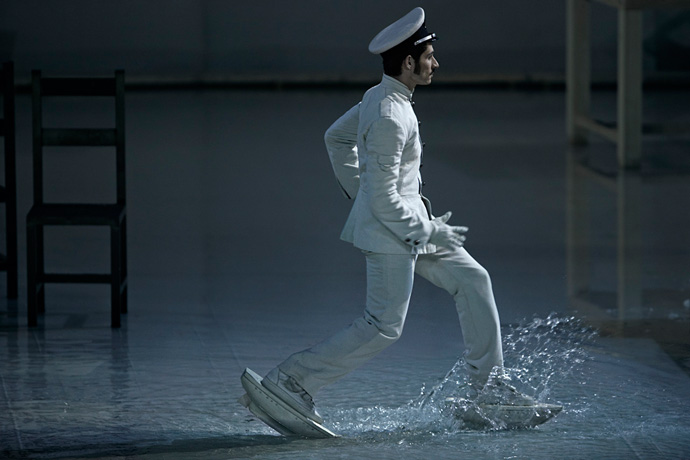 Jason crossing the sea. Scene from MEDEA2 by Dimitris Papaioannou. Photo by René Habermacher
Jason crossing the sea. Scene from MEDEA2 by Dimitris Papaioannou. Photo by René HabermacherMany people were suddenly exposed to my work through the Olympics, but of those who had a real interest, many were too young to have experienced MEDEA. So I returned to MEDEA, attracted by the idea of presenting it again with an all new cast, and approaching it with a new idea: to take the passion out. I wanted to reconstruct it, refine it, clear it out, strip it of anything unnecessary, drain the blood from the performance and deliver it in the cleanest form I could manage. That was my intention with MEDEA2.
Having done that, I could continue with new work, first NOWHERE and now INSIDE. This is a completely new phase, where I am tending to create shows with no protagonists and no characters. The crowd is the element I’m focusing on now, using it in a more open structure in order to create images involving spatial and human relationships.
Excerpts of MEDEA 2 accompanied by interview with Dimitris Papaioannou.
-

Karsten Födinger, concrete in the air
-Karsten Födinger, a young artist, now at the Palais de Tokyo with an overwhelming installation : “Cantilever”.
2010, reinforced concrete, 340 x 600 x 460 cmgarnd opening RaebervonStenglin, Zurich
He uses these materials found on construction sites – concrete, plaster, raw wood, scaffolding – and offers to the viewer a space between construction and deconstruction. This idea of a moment of instability to stability (and vice versa) where structures are at the limits of physical laws. Födinger disturbs our perceptions and shows us a mental site which challenges the idea associated with a finished structure.
Cantilever @ Palais de Tokyo, Paris (Pic by Z.Z)
At the Palais de Tokyo, Karsten Födinger installs a concrete slab on a system of pillboxes, normally used for scaffolding. The concrete is suspended in the air defying gravity. The work makes complete sense in context of center art restructuring. We are given a new relationship to our daily confrontation with the space.
-

MATTHIAS VRIENS McGRATH EXPLAINS TO FILEP MOTWARY EVERYTHING ABOUT BL33N, HIS NEW PROJECT ALONG WITH HIS HUSBAND DONOVAN
-Its been almost a decade since Dutch magazine closed down and almost six years since my last official conversation with Matthias Vriens. In between and later, many emails regarding our personal news, ideas and hopes took place.
Matthias recently married to Donovan and since then, they both sign as Vriens-McGrath. For a while now I was informed about a new project they have been preparing, BL33N, but finally the mystery is solved, since our last night’s conversation..
BL33N (pronounced BLEEN) is a project by Donovan and Matthias which will oficially launch in May 2011. Since yesterday a rather tantalizingly sexy trailer hit the web in order to prepare us for what’s coming. Bl33n will be an online magazine experience, where all material shot by Donovan and Matthias as a team will support the t-shirts that they sell.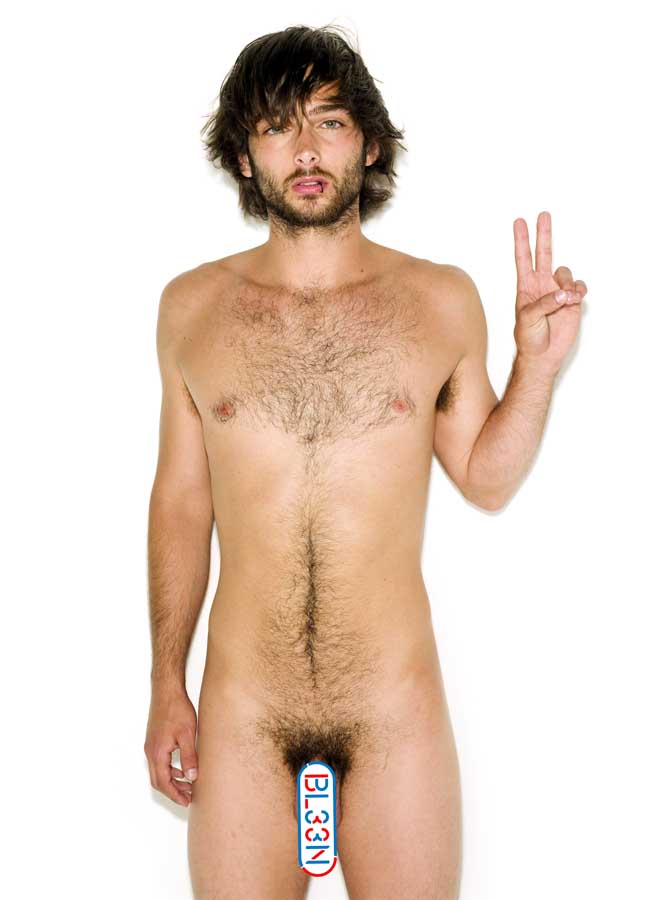 By Matthias Vriens-McGrath.
By Matthias Vriens-McGrath.The first collection is inspired by the body. Its design placed inside the shirt, when turned upside down will become a mask when worn over the face while others will include hair prints on shoulders and back that look like heavy metal or jewelry printed in mirror silver and latex. Printing technics will include latex, glitter. Their aim is to open up to a world wide collaboration of people connecting globally and will include a lot of world travel with the brand, while promoting freedom for all.
“Filep, free, freedom is something we take for granted and not available to all of us. Such an abstract, intellectual property, yet essential for all. We would like to promote freedom for all and with bl33n we intend to do just that. Part of our profit will go to promote freedom.”

FILEP MOTWARY: So Matthias,how did you come up with the idea of BL33N?MATTHIAS VRIENS-MCGRATH: By accident via google, we found bleen, then bought intellectual property of bl33n.
You were one of the founders of published bible DUTCH MAGAZINE back in the late 90’s and early 00’s. How do you see yourself creating a web-platform?
We are just doing it… and take it from there. As we both have never been one to over-think or over intellectualize matters.
Whats the web’s real power today regarding fashion?
I believe pretty strong, information is scattered around in seconds, no where to hide. As horrid as it can be, once embraced it’s pretty cool and exciting.
Your new project along with your huspand surrounds a variety of actions including orthologic actions like promoting ideas like “freedom for all”. What do you really mean with this?
Our believes are visual delights and as simple as that might seem, the human body in all of it’s glory remains a struggle. Nudity as a metaphor for freedom and its something we all have, yet not available to all of us. Seems simple no…?
I would like to know more about the t-shirt collection you are preparing?
The first collection relates -again- to the body. Monster faces, printed upside down, inside out, become masks when pulled over your head. hair prints draped over back and shoulders printed in latex become ornamental, sculptural jewelry. There will be several collages-shirts that connect to the contemporary art world, while others are printed with the BL33N logo placed on parts of the body that become ‘questionable’
Are you thinking or extent it to a complete collection in the coming future?
Yes, both Donovan and feel strongly about underwear for example, but all in time…
-

dimitris papaioannou : a pasolinian touch
-Dimitris Papaioannou’s work as a choreographer has significantly reshaped the Greek performing arts landscape.
With his directing of the Athens 2004 Olympic Games Ceremony, a ground-breaking success, he played his way straight in the heart of the spectators, hailed a “triumph” by TIME MAGAZINE and THE TIMES of LONDON.In 2005 Dimitris Papaioannou was awarded the Golden Cross of the Order of Honour by the President of the Hellenic Republic for outstanding artistic achievement. For his following shows “2″ and MEDEA2 enjoyed an unprecedented run in the Greek capital, each with over 100 000 tickets sold. This accelerated development came not without controversy. With his latest play INSIDE Dimitris returns to his experimental roots.
THE STIMULEYE met with him during a break of rehearsals in Athens, to speak about his new play and look back to his point of departure.
Following the first part of three on the conversation with Dimitris Papaioannou, accompanied with exclusive pictures by René Habermacher.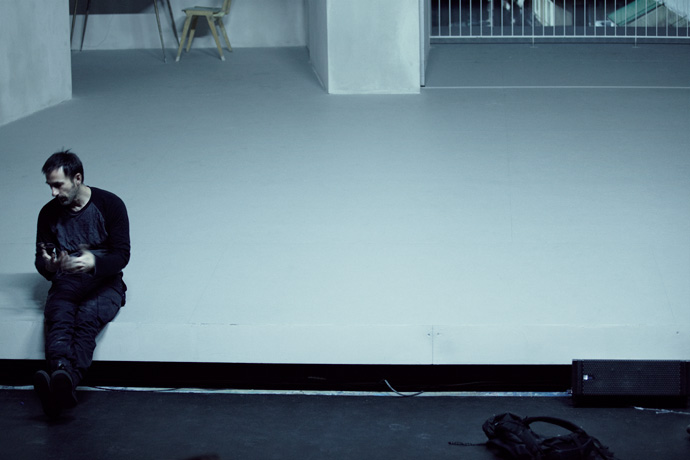 Dimitris Papaioannou on the rehearsal set for his new play INSIDE. Photo by René Habermacher
Dimitris Papaioannou on the rehearsal set for his new play INSIDE. Photo by René Habermacherpasolinian touch
DIMITRIS PAPAIOANNOU: I’ll be right with you — I’m just making a coffee!
RENÉ HABERMACHER: You’re freshly shaven! You look very 19th-century with your moustache.
I am from the 19th century honey, I’m very old!
It’s been a while since we had time for a talk, since I left Athens and you last visited Paris. We met only briefly during the rehearsals for your new play INSIDE, which you’re currently working on. You spent last Spring in New York. Tell me about what you did there.
I was there from March until June on a Fulbright Artist’s Scholarship. A mid-career scholarship obviously… [laughs]
Actually in a way I was studying the story of performance art [with Laurie Anderson at The Kitchen NYC] and developing my Final Cut Pro skills, as well as experiencing a little more of New York life, now that I’m a mature boy and things are different!
How was it returning to Athens after that?
For me it was a blessing because I discovered that I had left New York when I was still under construction. It’s the perfect place to be when you are like that, but in this phase of my life what I found there was a little more superficial than I would have liked. The Athens I returned to was in complete economic crisis and emotionally depressed, but still I was deeply relieved to spend summer back home.
Dimitris, I know you were born in Athens, but we’ve never talked about your childhood.
I was born and grew up in Athens, in a lower-middle class family. My parents made financial sacrifices so that I could go to a very expensive school, the Athens College. Then I had to run away from home because my parents wanted me to live the life of a straight architect. But I was a gay man, and I wanted to be a painter. I became the student of the Greek painter Yannis Tsarouchis* (1) in the old fashioned way, where painters trained people in their atelier. It was there I was introduced to true art. I had been painting since I was a child, but it was when I met Tsarouchis that I realised what painting really was. Later I entered the Athens School of Fine Arts.
* (1) : Yannis Tsarouchis, 1910-1989 One of the most important twentieth-century Greek painters, Yannis Tsarouchis portrayed and helped to define modern Greek identity. The deeply sensual painter was much influenced by the French impressionists and often depicted sailors, soldiers and the nude male body in erotic situations.
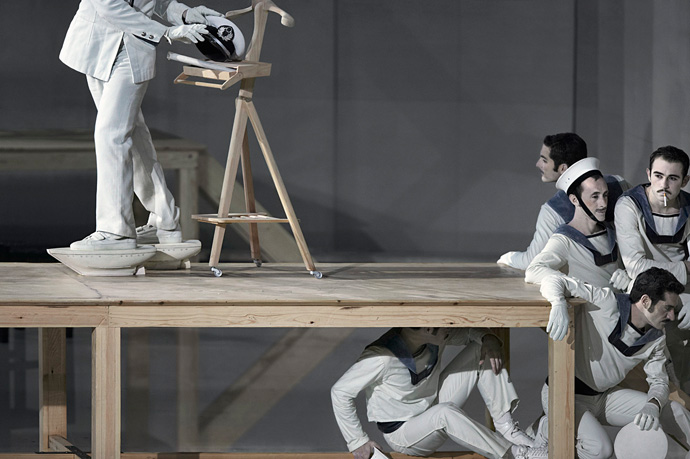 The departure of Jason in reference to Yannis Tsarouchis. Scene from MEDEA2 by Dimitris Papaioannou
The departure of Jason in reference to Yannis Tsarouchis. Scene from MEDEA2 by Dimitris PapaioannouHow did you meet Tsarouchis?
I knocked on his door. I showed him some my paintings and asked for his comments. He was not cruel, as he could have been, about those awkward early drawings — instead he was very polite. My college had organised an exhibition of my work in the building’s library, so I invited Tsarouchis to see my work up close. The next day he called me and invited me back to his house, after which he allowed me to watch him paint, and would give corrections on my paintings. I became his student.
How did this encounter shape you? Did it leave a mark on your artistic work?
Well, your first mentor leaves a strong mark on your life. I grew up in a house that had no contact with artists, there wasn’t a single painting on the walls. My parents weren’t very fond of art, it wasn’t part of their lives. I felt like an alien, wanting to enter this world. So Tsarouchis was the first artist I really saw working, and I realised that the life of an artist is possible and, to my eyes, very charming. I felt at home in a way. And he was a great painter. He had a quality that interests me a great deal: he could make magic with the humblest of materials — he could make roses out of toilet paper, use wires to make small sculptures. The thing I think I have learned from him is that you can make poetry out of garbage.
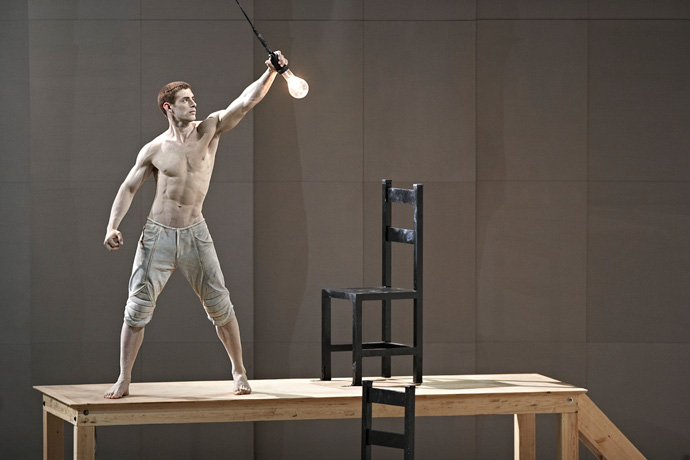 “Helios”. Scene from MEDEA2 by Dimitris Papaioannou. Photo by René Habermacher
“Helios”. Scene from MEDEA2 by Dimitris Papaioannou. Photo by René Habermacher -

ARI MARCOPOULOS
-For thirty years, photographer Ari Marcopoulos has been pioneering contemporary photography with his unique style of raw immediacy documenting subcultures such as skateboarders and graffiti artists, as well as landscapes and his own family and friends. Since his days printing photographs for Andy Warhol, he has amassed a huge body of work marked by its arresting and unsentimental intimacy. Bound to mimic a phone book, his newest publication Directory presents a collection of approximately 1,200 photographs, with curator and critic Neville Wakefield providing insightful commentary. Each book in this limited-edition series includes a print signed by the artist.
-

next: dimitris papaioannou
-A quote from Rumi, the Persian sufi, translated by Coleman Barks:
“When you brush a form clean, it becomes what it truly is” -

kate moss as the night porter, take 1.
-Marc Jacobs’ tour-de-force ending for Paris Fashion Week, featuring handcuffs, elevators, and some obsessive ladies, almost made everyone forget about the Galliano debacle. The image now engraved in everyone’s mind is that of Kate Moss closing the Night Porter-style show, cigarette in mouth. But however powerful it was to see it live, somehow this image had already been floating in collective consciousness…
“Kate” by René Habermacher for Numéro Paris, Make-up by Linda Cantello.
Before he became a photographer, René Habermacher was as an illustrator — who was already a bit of a photographer. Numéro Paris, under the helm of Babeth Djian and Thomas Lenthal, frequently commissioned him fashion and beauty series made up entirely of photorealistic illustrations, “unreal” photos.
“Unreal” because there was no shooting, no camera. Only René, an idea, dozens of image references, hundreds of hours of drawing and airbrushing, and in this case, the advice of master make-up artist Linda Cantello, of Roxy Music fame.
So for this 2003 beauty series, René imagined Kate Moss as heir to Charlotte Rampling’s SS-cap-wearing and cigarette-smoking character from the 1974 film The Night Porter.
Where it gets interesting is that these images then found their way into the work of Terry Richardson (NSFW below), who thought that Kate was missing something else in her mouth…
(more…) -

EYE 2 EYE: la lutte de l’amour
-Caroline Daily interview of Antoine Asseraf about “La Lutte de L’Amour” (The Struggle of Love), the SS2011 film he made for Erotokritos.
Caroline Daily: what is the first film which made an impression on you ?
Antoine Asseraf: The most striking memory for me is David Lynch’s Lost Highway.
It was my first Lynch, and the mix of glamour and goth, the changes in personality, the concept of looping, free intepretation, all left me without voice.With David Lynch, there is always a staggering artistic direction, a mix of architecture, music, design and casting which create entirely novel worlds.
In a different register, there is also Danny Boyle’s Trainspotting, which left a mark because it’s such a violent film, but with an “english” type of violence – very different from the hollywood violence to which i had grown accustomed.
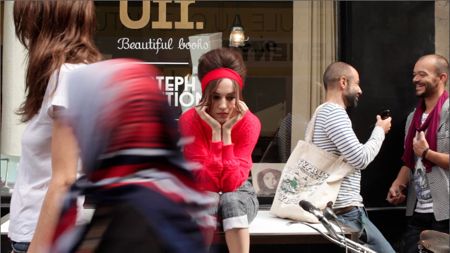
-

PIXIFOLY
-For many years now I’ve had this image permanently burned into my retina, visions of a kids’ television show centering around a giant TV screen-cum-arena showing video games in which people would “dive”. But it seemed so ancient that I couldn’t really identify its source…
With the recent obsession with Tron, and the upcoming opening of the Gaîté Lyrique digital center in Paris (more on that later), this visual memory of mine has resurfaced…
The source: Pixifoly, a segment on TF1 channel’s “Vitamine” children’s show, which ran between 1983 and 1984.
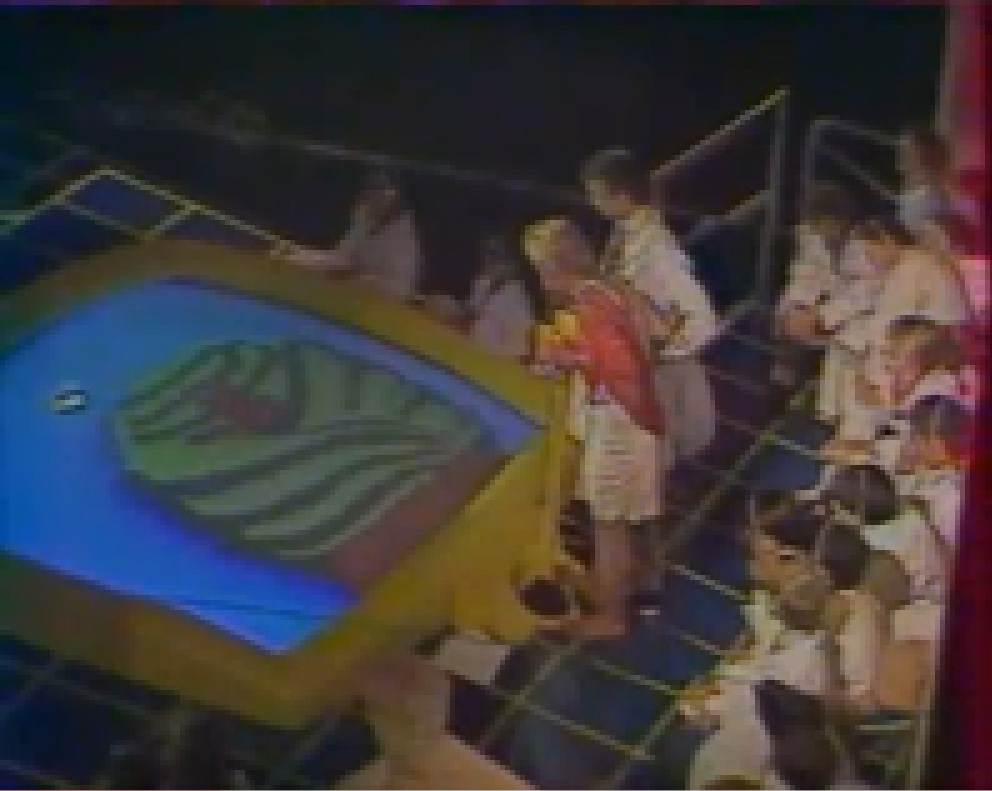
For better context, imagine that Starcade, the first video-game related TV show premiered in the USA in 1981,
TRON was released in 1982, and the NES didn’t go west until 1986…
I was 4 years old when I saw PIXIFOLY, and yet it got stuck in my head.The basic premise of PIXIFOLY was “TRON, for kids, in front of a live audience, every week.”
Every wednesday afternoon, an audience composed entirely of children would gather on the set with the show’s hosts, facing a giant screen set into the ground.
One of the hosts would step onto the screen and be immersed into a videogame world full of adventure.
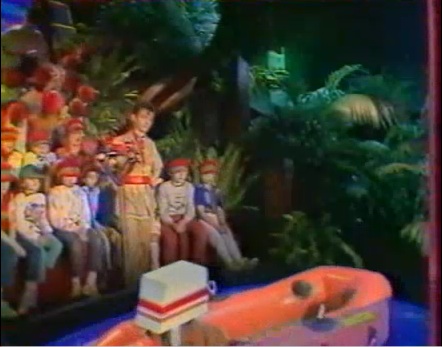
Each episode used a different videogame, a real game made for the consoles of the times – Commodore 64, Spectrum ZX, Atari, etc. – and showed the hosts “playing” with it using a giant pogo joystick. But because at the times videogames were a bit of a marginal subject, especially for the number one public channel in France, videogaming was not the core of the show, just a cutting-edge way of mise-en-scène for a kids adventure show:
Not only were the credits one of the first 3D (“images de synthèse”) sequences at the time, but most of the show relied on the revolutionary Paintbox graphics postproduction system to mix live footage of the hosts with game footage. Space invaders, scuba diving, kung fu fighting, Aztec adventures — the video game was but a starting point on which the producers built their storylines, adding extra characters, costumes and props into the mix. The favorite trick would be to have the characters “fly” on top of flight simulator backdrop.
In a way, the video game was a cheap, ready-made set for the PIXIFOLY adventures.
(more…) -

sensibility embedded in its fabric
-The Victoria and Albert Museum presents one of the most influential and enigmatic fashion designers of the last forty years: Yohji Yamamoto. Shortly before the opening, THE STIMULEYE caught up with V&A Contemporary Curator Ligaya Salazar, curator of this installation-based retrospective, exploring the work of a designer who has challenged, provoked and inspired with designs that have rewritten notions of beauty in fashion.
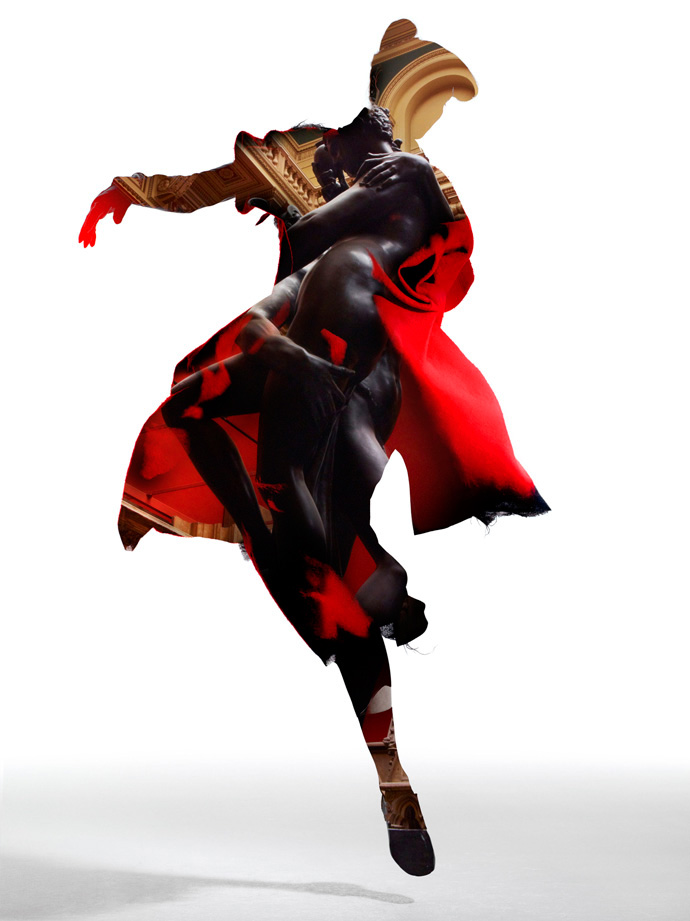 YOSHJI YAMAMOTO Photography Nick Knight, Art Direction Peter Saville
YOSHJI YAMAMOTO Photography Nick Knight, Art Direction Peter Saville“The timeline will consist of a mixture of clips of key fashion shows from the last 30 years of his illustrious career, some bits about his main collaborations in film, performance and photography and some very special extras. I hope that this will help shed light on Yamamoto’s extraordinary approach to collaboration” – Ligaya Salazar
On display are 80 women’s and menswear garments, which are most representative of his work that is recognised for subverting gender stereotypes and has featured women wearing garments traditionally associated with menswear. The exhibition also includes menswear items from the Autumn/Winter 1998 season which was famously modelled on women.
Accompanying the exibition, Ligaya produced a series of images with Nick Knight, styled by Katie Grand, and edited a stunning Book that also sheds light on Yoshji Yamamoto’s relationships with other creative collaborators: including Peter Saville, Marc Ascoli and M/M (Paris), Pina Bausch and filmmakers Takeshi Kitano and Wim Wenders.
René Habermacher sat down with curator Ligaya Salazar for a chat on this and her curatorial work on the projects…
RENE HABERMACHER: Hello Ligaya! how is things? Tense, so short before the opening?
LIGAYA SALAZAR: Ha! We are actually a little ahead of schedule, awaiting Yohji’s visit
Now i am impressed!
Yes he will be coming to the V&A after his Ready-to-Wear show to check everything is in order and to paint on the gallery walls!
I would assume usually that would come first- the painting….
Oh no — not painting the gallery walls, he will be painting life-size silhouettes on the wall behind and amongst the mannequins. It will be very special.
(more…) -

COMING MARCH 10th, 2011
-A diverse community of contributors, all vast in their effort to understand, contextualize and shed light on some of the most inspiring topics in art and culture today.
The Stimuleye is a unique, multidisciplinary online publication in the form of a blog.
The Stimuleye will be a meeting place for an international, multi-generational collective of contributors to share their inspirations, artistic visions, and their aesthetic and intellectual points of view on the world that we live in.Mexico City, Paris, Nairobi, Istanbul, NYC, Berlin, Tokyo, Hong Kong, Athens, London, L.A…. we’re all over the globe. The blog will be representative of a variety of aesthetic ideals and opinions as well as a wide range of subjects.
The Stimuleye is about supporting up-to-date, online authorship.Unlike most art, fashion or culture blogs, The Stimuleye is not about frequency, it’s about insight.We want our network of Stimuleyes to have time to think and present images and ideas in a comprehensive way.
